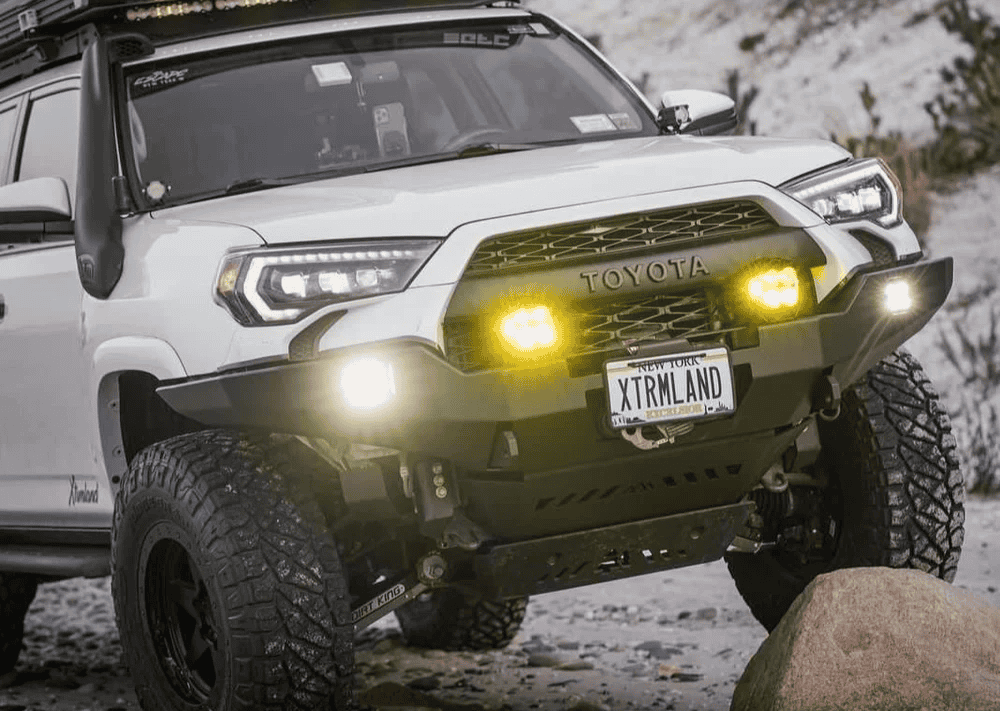Overland Vehicles

A snorkel raises the engine’s air intake to roof level, where air is often cleaner and farther from splash zones. That simple change reduces the chance of ingesting water during crossings and lowers dust intake on convoy roads. It does not seal the engine bay or electrics. If water enters through wiring grommets, door seals, or a leaky airbox, a snorkel will not save the engine from damage. Think of it as one part of an air management system rather than a magic shield.
Snorkel intake improves engine protection during dusty trails and water crossings while overlanding.
Engines cannot compress water. If the intake sucks in a slug of water, hydrolock can bend rods and end a trip. A properly sealed snorkel reduces this risk by lifting the intake above the bow wave. Even then, you must confirm the airbox, intake ducting, and fender openings are sealed. Slow entry, steady throttle, and an exit plan still matter. Extending differential and transmission breathers helps keep water out of driveline components while the engine breathes cleanly up top.
On silty desert tracks or long convoy days, the roofline often sees cleaner air than the fender. A snorkel can reduce filter loading and help maintain power by feeding the engine less dust. Ram style heads can shed rain, while cyclone precleaners spin out heavier particles before they reach the filter. Regular inspections remain essential, because a clogged filter chokes performance regardless of where the intake sits.
Cutting sheet metal and aligning ductwork demands precision. Any gap can become a leak point, so silicone joints, well seated gaskets, and torque checked fasteners are vital. After mounting, a pressure or light test helps confirm a sealed path all the way to the airbox. Over time, recheck clamps, head orientation, and brackets. Expect minor wind noise near the A pillar and monitor for branches that might snag the intake head on narrow trails.
For many forest roads and moderate trails with shallow streams, careful line choice and patience keep water below the factory intake point. If you avoid monsoon season, flooded crossings, or dunes, the benefit shrinks. Drawbacks include added cost, potential noise, and the risk of leaks if installed poorly. Aerodynamic changes are small but present. Some vehicles carry tight under hood packaging that complicates routing. When the environment is mild, a clean filter and smart driving often deliver the same outcome without the added complexity.
Skip the snorkel if your routes do not demand it, but do not skip preparation. Extend axle and transmission breathers above the highest expected waterline. Seal the airbox lid and inspect for cracks or warped edges. Use a quality filter and consider a prefilter sock for dusty days. Plan crossings by walking them first when safe, watch upstream debris, and keep a steady bow wave that stays below hood level. Turn around when conditions change. The best insurance is judgment.
If your itinerary includes frequent crossings or multi day desert travel, a snorkel moves from nice to have into practical tool. The key is a sealed system from head to airbox, plus driveline breathers that match. When done right, you reduce risk and service intervals. When done poorly, you add complexity without protection.
If you plan remote travel with real water or dust exposure, a professional build pairs a sealed intake with breathers, splash shielding, and maintenance access so you are not guessing in the field. See how we approach full vehicle planning on explore overland rigs. For tailored components, intake routing, and supporting protection that suit your platform and tire size, visit our custom overland upfit page. Curious how we work, communicate, and deliver? Learn more at why choose OZK Customs.
Tell us where you travel, how often you see water, and the dust you expect. We will recommend intake strategy, breathers, filtration, and the right supporting parts, then install and test so your rig breathes cleanly and stays protected. When you are ready, reach out and let us turn plans into a reliable, trip proven setup that matches your routes.
Skip guesswork and get a purpose built rig. Tell us about your routes and needs, and our team will design a sealed intake strategy, extended breathers, and the right protection so your vehicle performs where you actually travel. Submit the form to start your custom overland plan with OZK Customs.
ADDRESS:
6159 E Huntsville Rd, Fayetteville, AR 72701
PHONE:
(479) 326-9200
EMAIL:
info@ozkvans.com